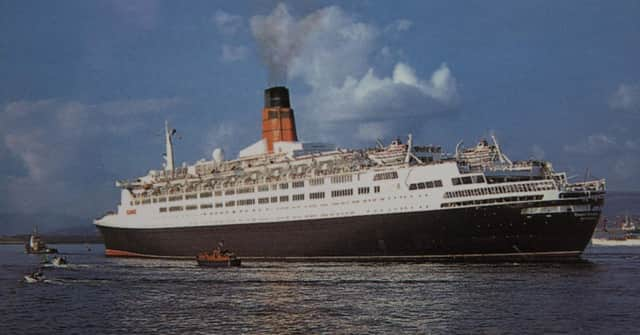Book charts Clyde’s history as shipping centre


100 Years of Shipping on the River Clyde charts the history of the industry since the era when its 40 shipyards produced one in five of the world’s ships.
It has been produced to coincide with the centennial dinner and conference in Glasgow of the association, which helps former seafarers and their relatives.
Advertisement
Hide AdAdvertisement
Hide AdThe Royal Navy’s orders on the Clyde, which date from 1794, included the 25,870-tonne battleship HMS Conqueror, whose launch was photographed in 1911 at the Beardmore yard in Dalmuir.
The Orion-class vessel took part in the Battle of Jutland during the First World War. Later battleships featured include the King George V-class HMS Duke of York nearing completion at the John Brown yard in Clydebank in 1941.
The 42,970-tonne warship took Winston Churchill to the US that year and played a major part in sinking the German battle cruiser Scharnhorst in 1943.
CONNECT WITH THE SCOTSMAN
• Subscribe to our daily newsletter (requires registration) and get the latest news, sport and business headlines delivered to your inbox every morning
The book has several pictures of the QE2, the Clyde’s most famous passenger liner, including passing Greenock for the last time on a farewell visit in 2008 – 40 years after being launched at the John Brown yard.
Author George O’Hara, a chartered engineer and former shipyard draughtsman, said despite Clyde-built becoming a byword for quality, the UK no longer saw the strategic value in shipbuilding.
Mr O’Hara said the result of the independence referendum had saved what little shipbuilding remained, such as for Royal Navy at BAE Systems in Govan and Scotstoun in Glasgow.
He said: “The No vote indubitably saved Clyde shipbuilding. Had it gone the other way, the ships would have gone.”
Advertisement
Hide AdAdvertisement
Hide AdMr O’Hara said the future remained uncertain for the river’s only other remaining shipyard, Ferguson Marine Engineering at Port Glasgow, because its short slipway limited ship size.
SCOTSMAN TABLET AND IPHONE APPS